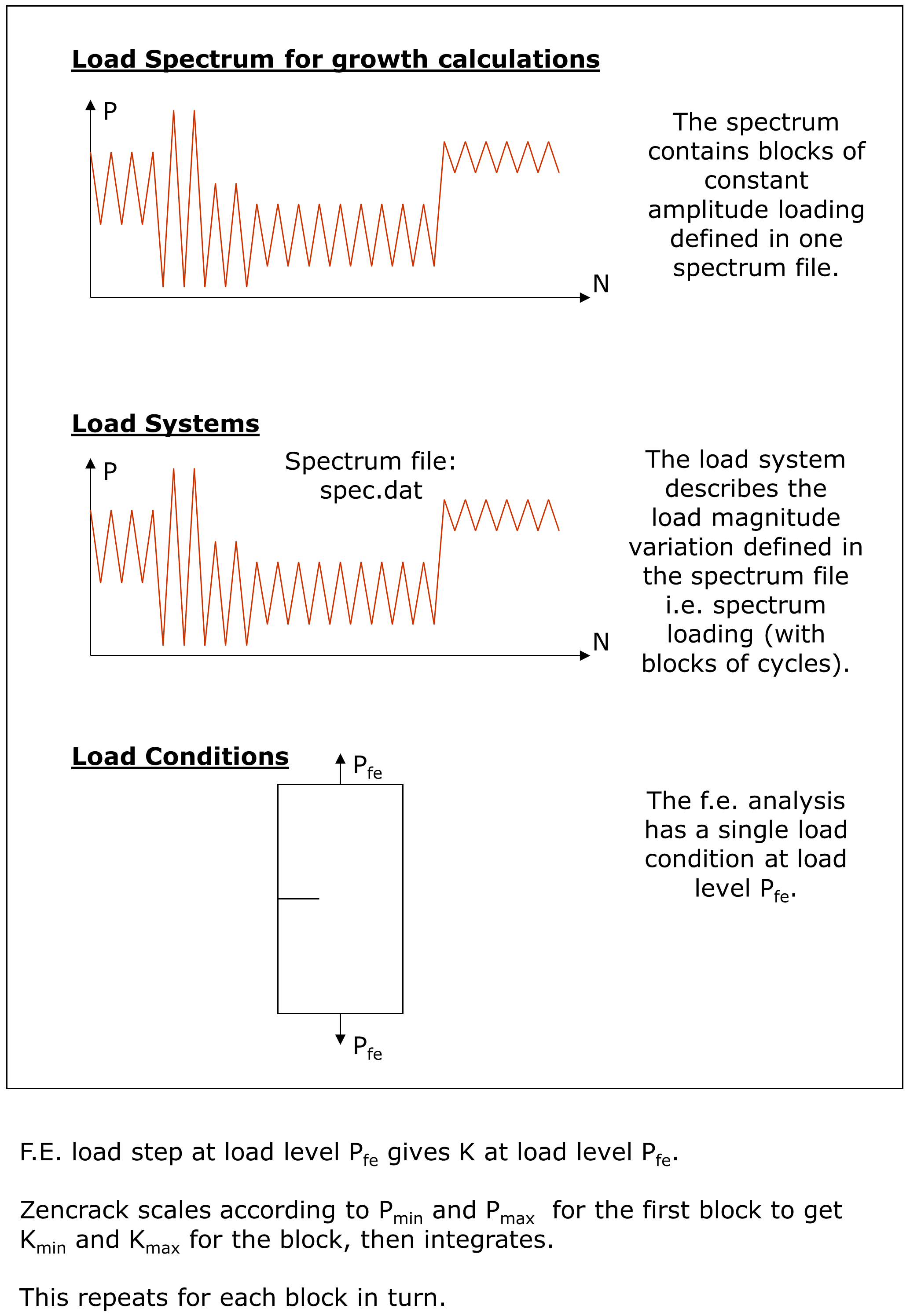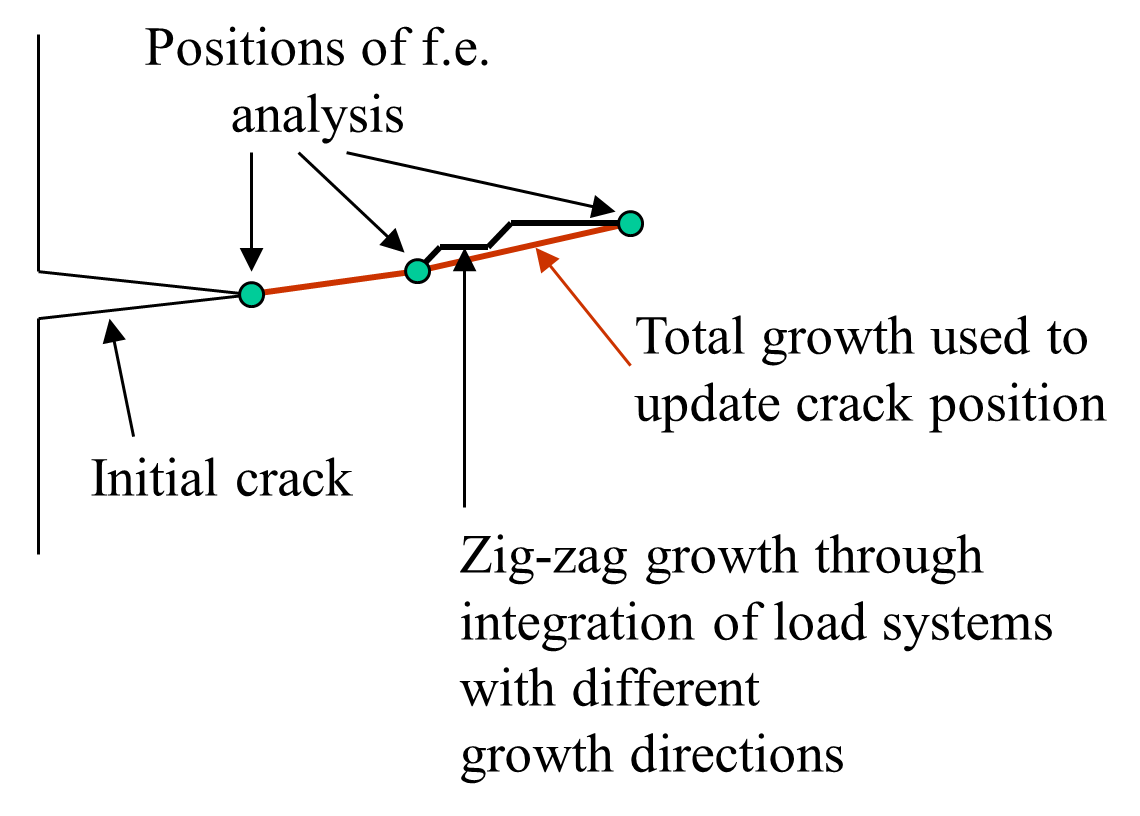- Software
- Zencrack
- Technical
- Load Definition
Load System Methodology
Load Definition
Load System Methodology
For analyses without crack growth the load definition is simple - Zencrack merely processes all available results data from the f.e. analysis and generates output of stress intenstity factors and/or energy release rates.
In order to cater for the widest possible range of loading types in a crack growth analysis, Zencrack utilizes a "load system" methodology. This allows definition of relationships between results of analysis increments in the f.e. analysis and the applied load spectrum.
The load system approach defines several types of basic load history which can be included in an analysis. For example:
- constant amplitude loading
- blocked cycle spectrum loading
- random cycle spectrum loading
- simultaneous load spectra (time histories)
- general complex "full cycle" loading
- static loading
- time history loading
The schematic shown here demonstrates the way that the load system and f.e. load step relationship can be set out in a blocked spectrum fatigue crack growth analysis. In this particular example, the overall load spectrum contains a series of constant amplitude load blocks in which the maximum and minimum load levels and number of cycles vary from one block to the next. All loading components are defined as varying in phase. The f.e. analysis models one load condition and produces one set of results data. One load system is defined for the Zencrack analysis which relates this single load level in the f.e. analysis to the spectrum variation. During the integration process, the result from the f.e. analysis is scaled to the "current" load levels for the load block being integrated.

Within the load system approach additional options are available for combining static and cyclic loading or for extracting maximum and minimum load levels to define a range of loading for fatigue crack growth calculations.
In more complex situations, the crack growth direction may vary from one part of the load sequence to the next. The growth between f.e. analyses is then the overall integrated effect of this potentially zig-zag behaviour.

Technical
Load Definition
More in this category